
- Share via
JOHNSVILLE, Calif. — Quick — as befits a question about downhill ski racing: Where did it begin?
If Scandinavia comes to mind, consider this: Years before there were organized races in Europe, miners were competitively hurtling down mountains in a part of California known as the Lost Sierra, a mother lode of forests, lakes and small, remote towns in Sierra and Plumas counties about an hour north of Truckee.
This heritage is celebrated and reenacted each year at Johnsville Ski Bowl in Plumas-Eureka State Park. But COVID-19 halted the festivities for two years and during that time, the Dixie fire devastated the surrounding areas.
So this year’s Longboard Revival Races, concluding this weekend, celebrate not only the resilience of early Californians, but the modern-day fortitude of hard-hit mountain communities.
“As you can see, we needed a holiday,” said Pete Bartels, waving at a crowd that was jostling, dancing, hollering, and drinking beer at 10 a.m. during February’s event.
The history goes like this: The Gold Rush drew fortune-seekers from all over the world, and miners trapped by snow 30 feet deep learned to longboard ski from a pioneer born in Norway, where longboard skiing originated. Driven by boredom, they began racing, regularly clocking speeds above 85 mph on skis up to 16 feet long, which were not designed to turn or stop.
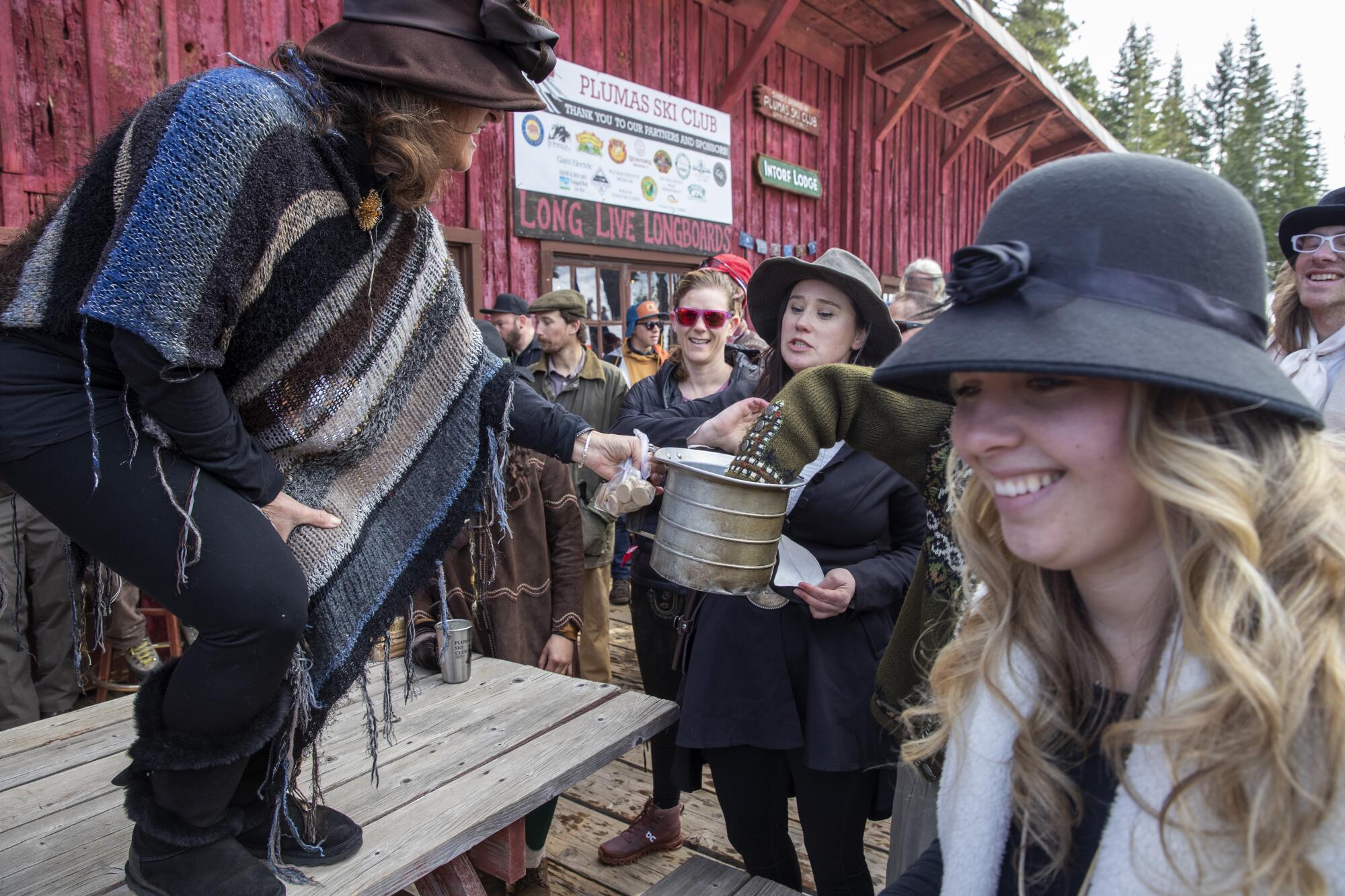
In the 1990s, a group of men who now call themselves the “Gray Beards” brought back the longboard races that began circa 1850 and petered out in the 1950s. An early poster from the relaunched event declared the races would begin at high noon with the tipping of the flask.
Bartels, then a professor at Feather River College in Quincy, had become enamored of the old, wooden skis he saw in the local museum and that locals sometimes unearthed in their sheds. He started a class crafting them.
Once they made the skis, they had to race on them, Bartels explained.
The trick to speed was — as it was in the Gold Rush days — the wax, called dope. Which explained the checkered hats on sale at February’s event proclaiming “Dope is King.”
No modern fluorocarbons are allowed, and everyone has their own recipe. Back when Bartels raced as Eureka Pete, he used to favor paraffin, a little turpentine and some WD-40.

Bartels has lived in Plumas County since 1972 which he says makes him a newcomer in these parts.
“When I first got here, there was one stoplight in the whole county,” he said. “Now there’s four or five.“
The races are held the third Sunday of January, February and March. By early morning at last month’s event, the park’s parking lot was full.
People with children and dogs — and in a few cases dogs pulling children in sleds and vice versa — trudged up a long, steep road on a blue-skied morning when the sun glinted off a dusting of fresh snow.
In front of a ski lodge built circa 1958, the Feather River Jubilation Orchestra played a lively mix of bluegrass, old-timey jigs, Eastern European classics and anything else the amateur musicians fancied. The banjo player had almost lost his house in the fires. The accordion player had been evacuated for weeks and stayed with one of the fiddlers.
The CEO of the event was drinking his second Sierra Nevada Pale Ale. If the race ended up with an odd number of contestants, he said, he would be forced to race, and that required libations.
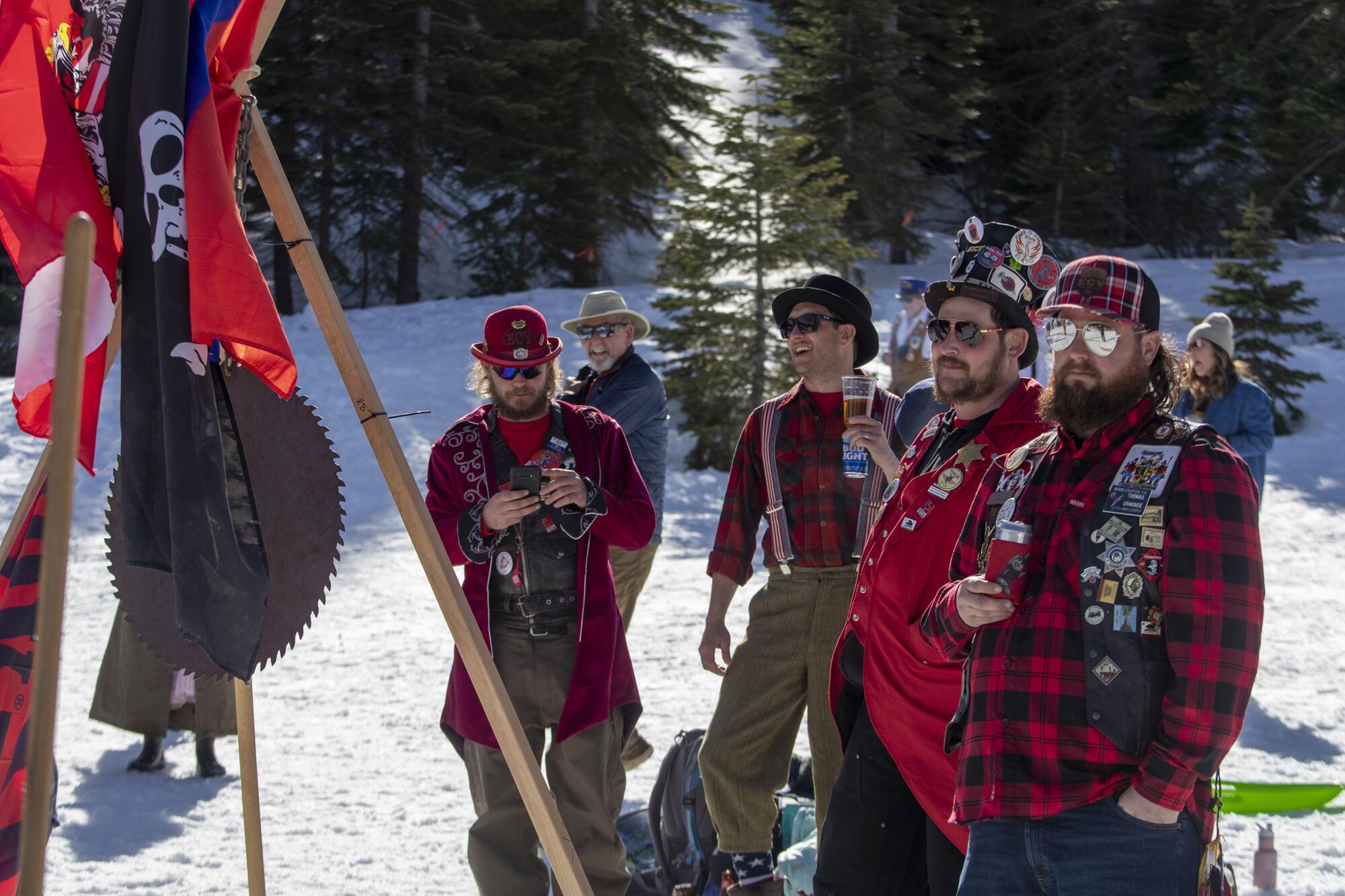
Robin Adrian-Murray, holding her grandson Mason, pointed and said, “Look, there’s your cousin Sierra.”
It was the third time a reporter had heard a Sierra pointed out — each time referring to a different woman.
“I guess it is a common name around here,” Adrian-Murray said. “But not really. I can only think of four or five Sierras that I know.”
She learned how to ski on this hill when she was four years old. Later, she and her husband — who also grew up in the area — left to find their futures.
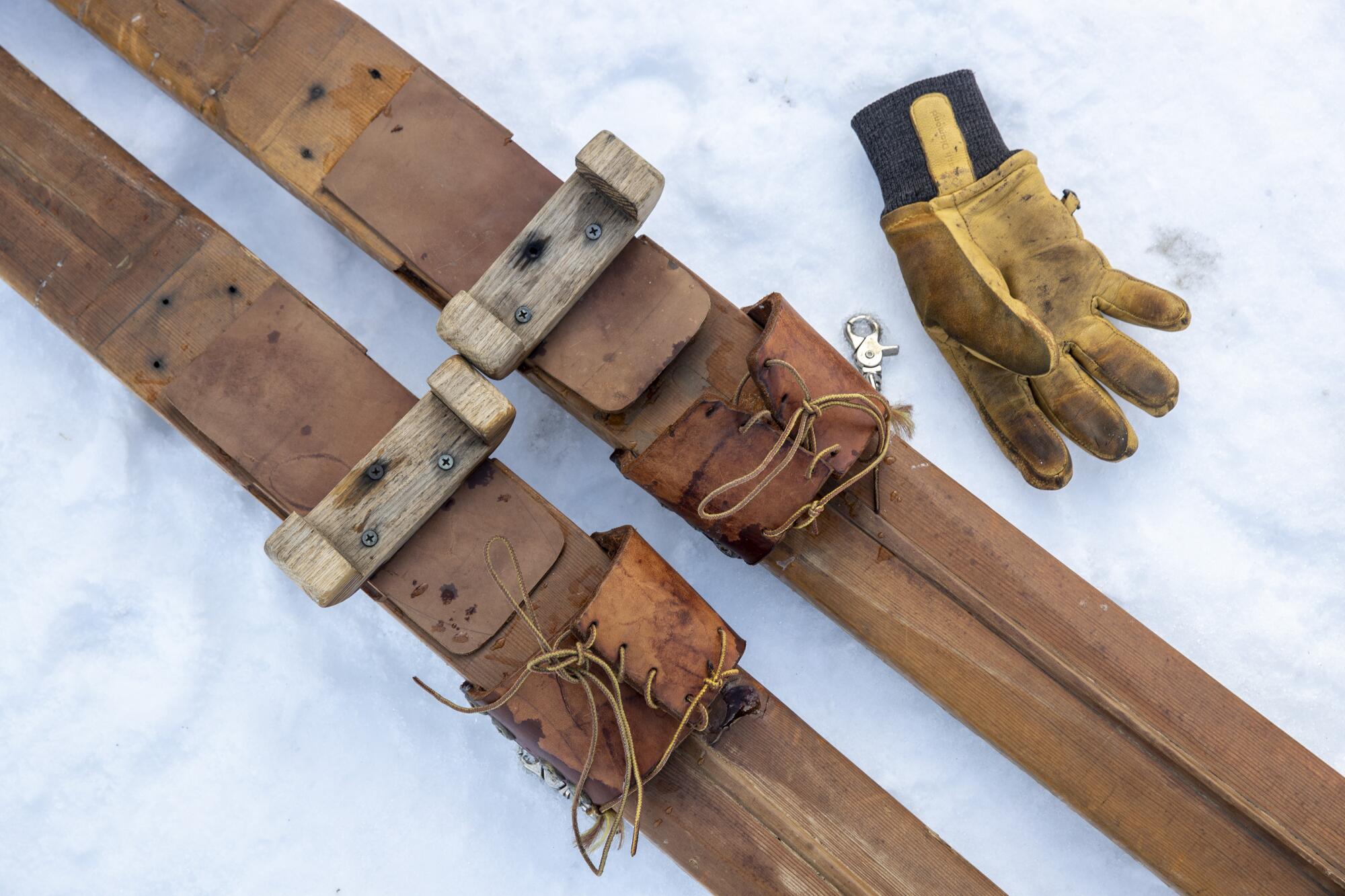
“But I always loved the mountains and being up high, so I talked him into moving back.”
They’re one of ten families that live in Johnsville year-round. Their children learned to ski here and now bring their children.
For a long time, the mountain communities were trying to raise money to put in a chairlift and reopen these runs on what is believed to be America’s first downhill ski area.
But there has been hardly any snow for six years.
“There was a dusting at Christmas that got our hopes up, but not much since. And with the fires, there’s so many things gone,” Adrian-Murray said.
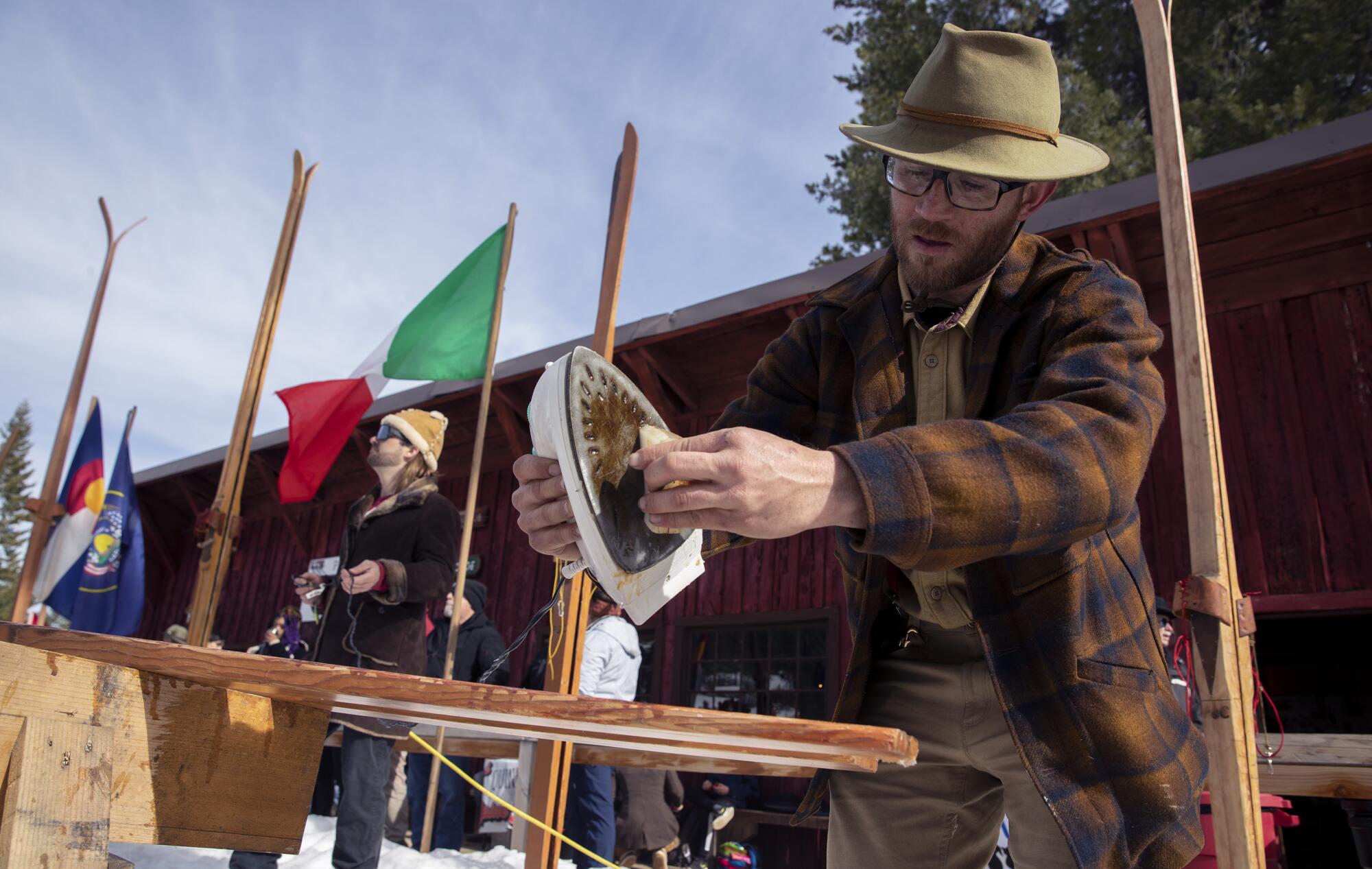
“But we’re pretty lucky up here. This is our backyard,” she said, nodding at craggy, snow-covered Eureka Peak, once called Gold Mountain because of the $25 million in gold produced from hard-rock mining during the late 1800s.
The races were held in heats, two racers at a time. In one of the day’s first men’s races, a skier fell immediately, struggling to stand back up on his lengthy planks.
The other fell. Both gave up on regaining a vertical stance and sat on their skis for a photo finish of two awkward tobogganers.
Cheering loudly was Monica Rutter, a first-time visitor from San Rafael.
During the pandemic her family had painted rocks, raised butterflies, baked bread.
“We’re close, and we believe if you concentrate on what you have instead of what you don’t have, you’ll persevere.” she said.
But she’s an attorney for the U.S. Postal Service, and thousands of those workers fell ill with COVID-19. Several who died were close co-workers. Her aunt and cousin back in South America died. Her daughter spent her senior year of high school at home. Her 14-year-old son has grown increasingly wary of getting infected. She and her husband, both government attorneys, have been under more work stress than ever before.
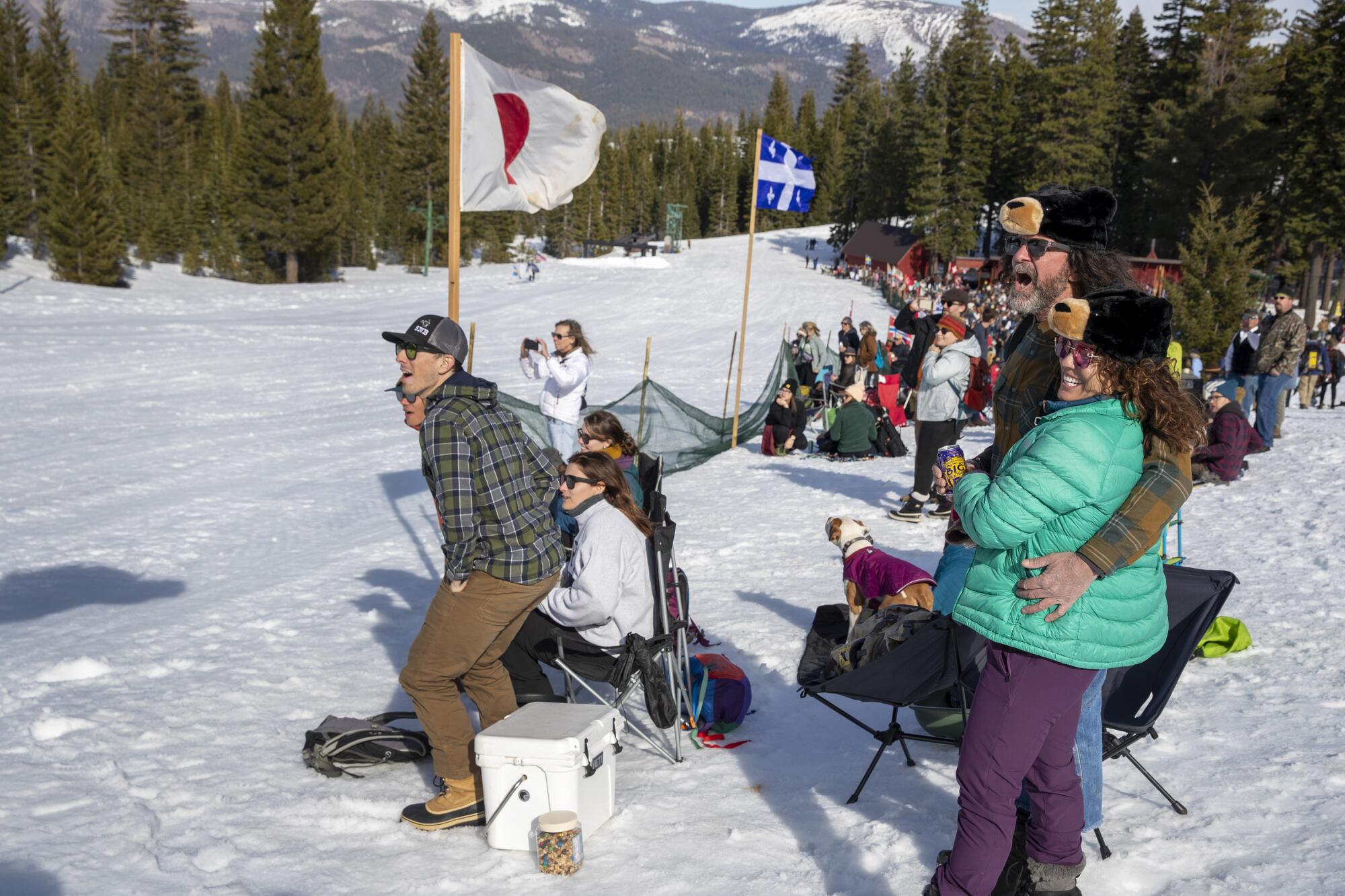
“We’re really lucky. But...” she said, pausing for a long moment. “It’s still hard. I’m so happy to be here right now. There’s friendly people. There’s beer. There are dogs. What’s not to love?”
She said she was going to tell her 82-year old father, who plays soccer four times a week, about the event.
“Because old men have a thing for Gold Country,” she said, as several people around her nodded in agreement.
Dick Schulze, the oldest competitive snowboarder in the U.S., ‘still rips,’ says his grandson — titanium knee and all.
Announcer John Sheehan put out the call for a new event: The Pooches on the Podium Photo Shoot. (Get your “Dogs of Longboards” calendar this spring.) About 25 owners with multiple pets gathered on the platform.
The malamute was turned around to face the camera. A Labradoodle climbed into a lap. The owner of a shiny black lab propped his dog’s front leg in the air as if waving hello. But the local newspaper reporter put her camera down.
“Where’s Annie?” she shrieked. “Annie is not in the picture.”
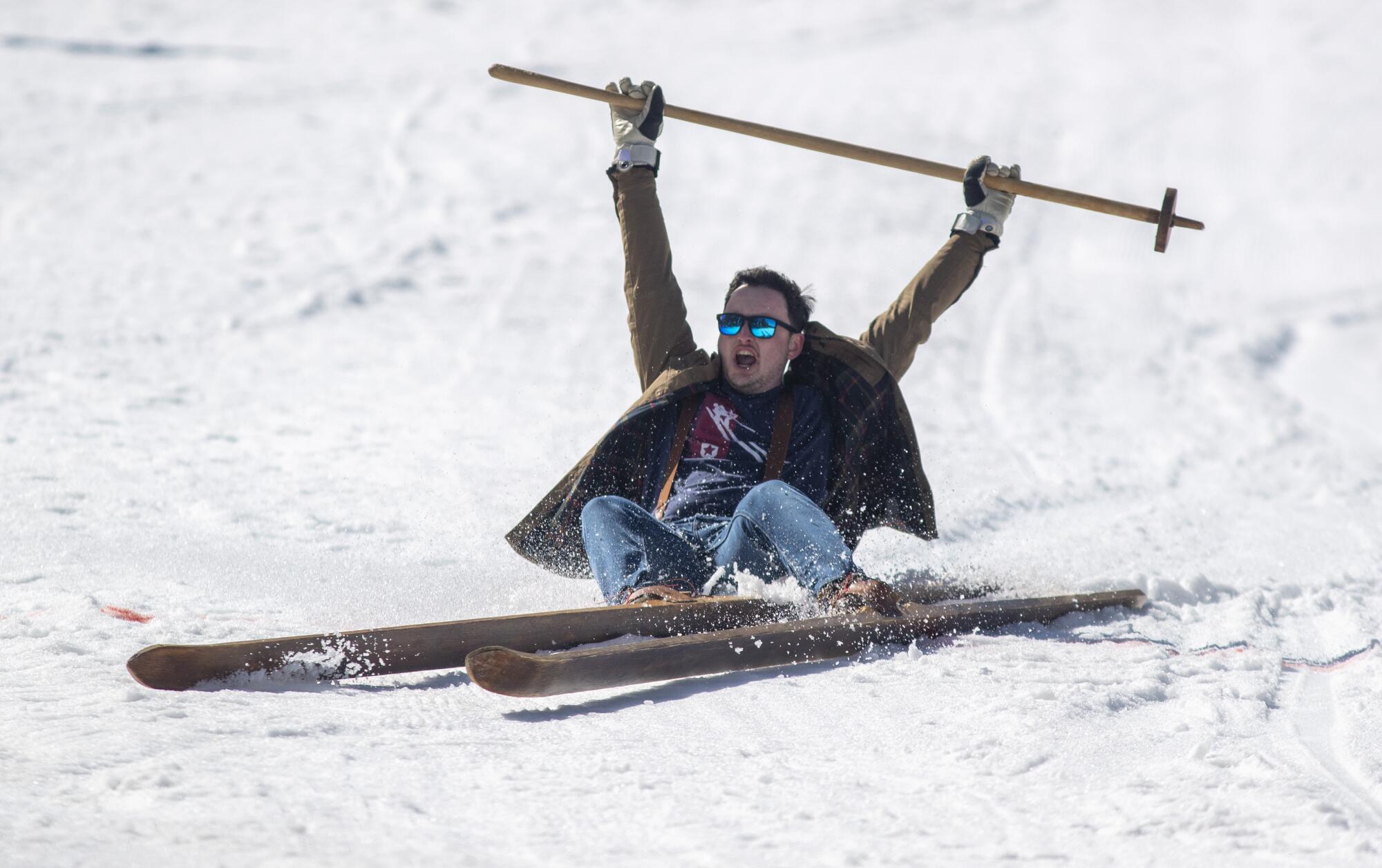
A small wiry dog was produced, placed in the front row, and the portrait taken.
Sheehan has been emceeing the event for two decades, and before the last heat, he requested over the loudspeaker that the gentleman in the red jacket move, as he was making it difficult for the inebriated judges to see the red finish line. The Clampers — an organization known for putting up historical plaques, and, well, drinking — serve as judges for the event. The spectator held his prized spot but took off his coat.
Now it was time for the experienced racers to swoosh down the mountain.
Two local men raced, which consisted of holding a motionless crouch atop two speeding, waxed boards straight down a mountain.
“There’s friendly people. There’s beer. There are dogs. What’s not to love?”
— Monica Rutter, a spectator at last month’s longboard ski races.
Ryan Murray, 32, won a heat that guaranteed a spot in the World Longboard Championship on Sunday. He is the father of Mason, cousin of Sierra, and belongs to a group called the Young Guns by the Graybeards.
Bartels, who gave Murray extra credit for his creative trash-talking before the race, said the Graybeards had held onto their titles longer than they thought they could, mostly because the younger ones used to party too late the night before.
But now, afflicted by bad joints, weak hearts and messed-up shoulders, they can no longer fly down a mountain at 80 mph on skis twice as tall as they are.
But they run the show, egg on the trash-talk and fend off certain Norwegians who insist downhill racing started in Norway.
“They don’t have a shred of written evidence,” Bartels said.
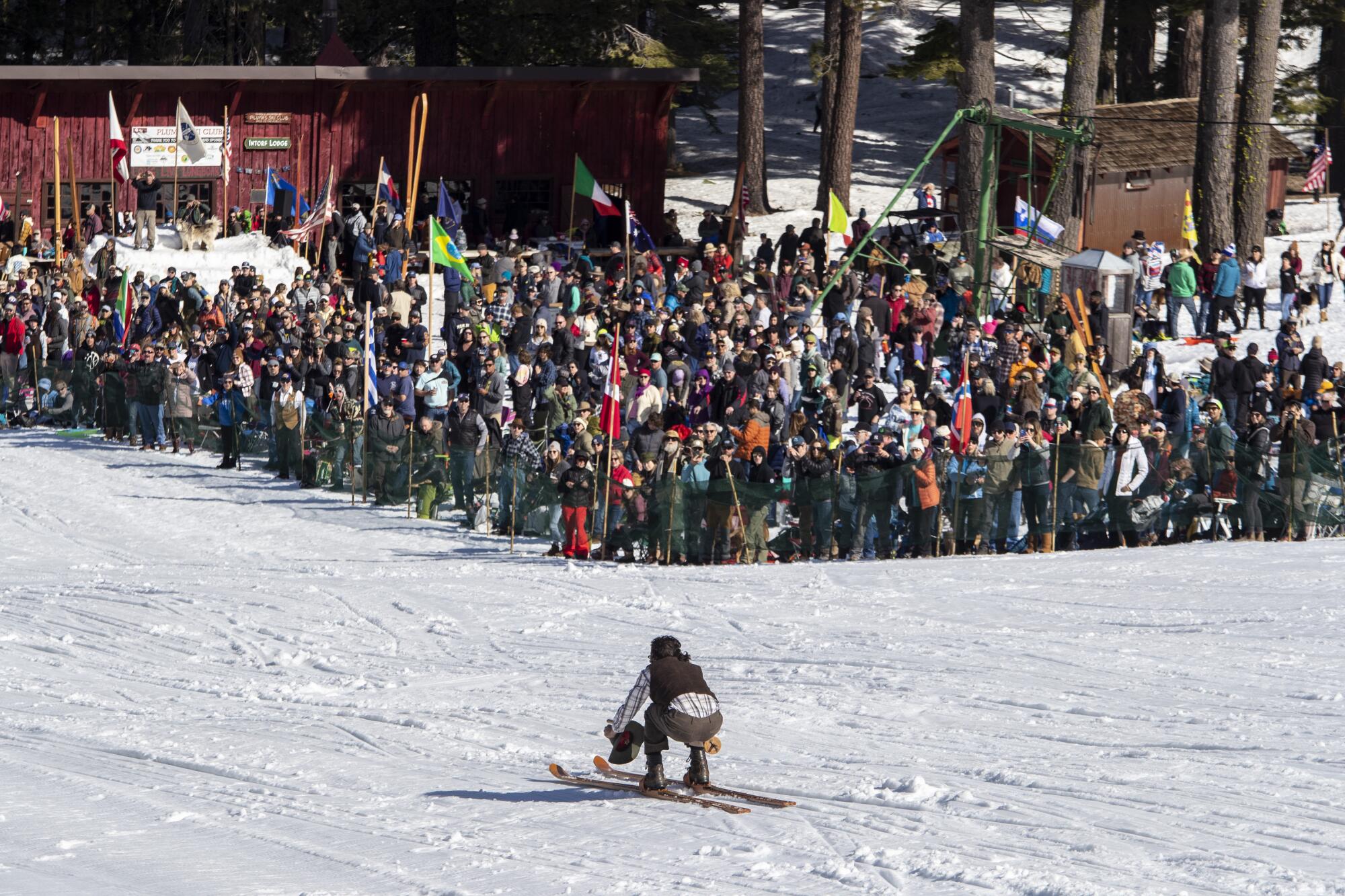
He continues to dig into the history and recently read how in the 1800s, miners from China were trusted with judging duties and holding the sizable wagers.
“Maybe kids raced one another home from school in Norway on snowshoes, but real downhill racing started right here in California,” he said.
Sheehan, the announcer, said the races — which encourage “whiskeying” and historical attire, thus explaining the many top hats, gingham skirts and flasks — are an important legacy.
“How it works around here, is we give a good deference to having fun,” he said. “When times are tough, it’s important to get your mind off things and concentrate on enjoying each other.”
More to Read
Sign up for Essential California
The most important California stories and recommendations in your inbox every morning.
You may occasionally receive promotional content from the Los Angeles Times.











